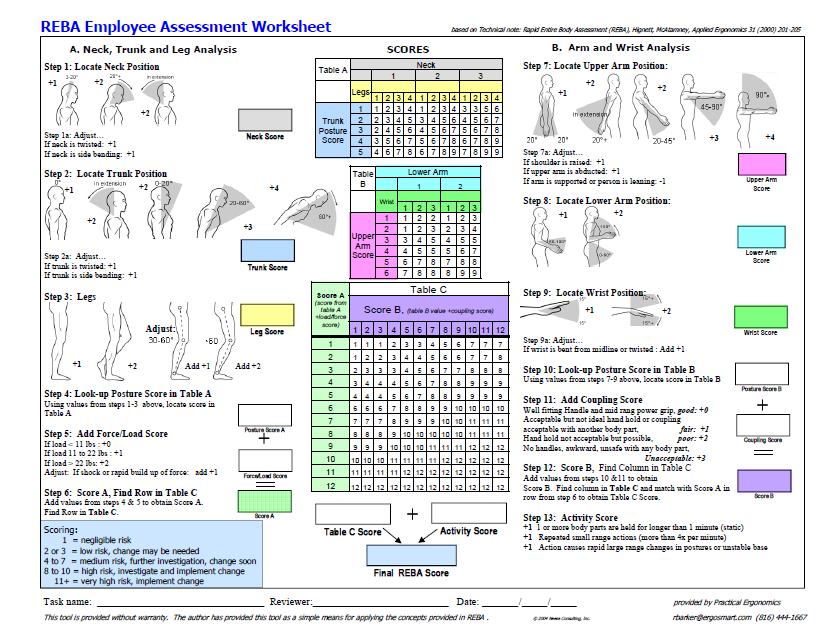Objective
REBA was developed by Hignett and McAtamney as a means to assess entire body posture for risk of WRMSDs. REBA has been developed to fill a perceived need for a practitioner’s field tool, specifically designed to be sensitive to the type of unpredictable working postures found in health care and other service industries. [1]
Intended Population
For survey investigations in the workplace where people complain of Work Related Musculoskeletal Disorders.
Method of Use
Consider critical tasks of a job. For each task, assess the posture factors by assigning a score to each region.
Score the Group A (Trunk, Neck and Legs) postures and the Group B (Upper Arms, Lower Arms, and Wrists) postures for left and right. For each region, there is a posture scoring scale plus adjustment notes for additional considerations. Then score the Load / Force and Coupling factors. Finally, score the Activity. Find the scores from Table A for the Group A posture scores and from Table B for the Group B posture scores. The tables follow the data collection sheet. Score A is the sum of the Table A score and the Load / Force score. Score B is the sum of the Table B score and the Coupling score for each hand. Score C is read from Table C, by entering it with the Score A and the Score B.
The REBA score is the sum of the Score C and the Activity score. The degree of risk is found in the REBA Decision table.
Reference
Hignett S1, McAtamney L.Rapid entire body assessment (REBA). Appl Ergon. 2000 Apr;31(2):201-5.
Evidence
Initial reliability for inter-observer coding shows promise but further work is needed to establish the validity of the tool.
References
- ↑ Hignett S, McAtamney L.Rapid entire body assessment (REBA). Appl Ergon. 2000 Apr;31(2):201-5.


